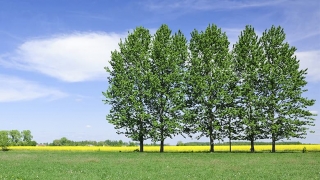Access to Greenspace Associated with Improved Mental Health in Early Days of Pandemic
Published on
Published on
Living close to greenspace during the early part of the COVID-19 pandemic may have buffered against depression and protected overall mental health, according to a new study from the Lifespan Brain Institute (LiBI) of Children’s Hospital of Philadelphia (CHOP) and the University of Pennsylvania. The findings were recently published in Frontiers in Sustainable Cities.
 Prior research has shown a positive association between greenspace and mental health in a non-pandemic setting, but the researchers wanted to examine this relationship during the unprecedented lockdown period of the early pandemic. To do so, they analyzed data collected through the COVID-19 Resilience Project between April 6 and October 12, 2020. The researchers investigated the association between tree-rich greenspaces, such as parks or nature preserves, based on U.S. zip code data and four mental health parameters: COVID-19-related worries, anxiety symptoms, depression symptoms, and a composite of the first three parameters.
Prior research has shown a positive association between greenspace and mental health in a non-pandemic setting, but the researchers wanted to examine this relationship during the unprecedented lockdown period of the early pandemic. To do so, they analyzed data collected through the COVID-19 Resilience Project between April 6 and October 12, 2020. The researchers investigated the association between tree-rich greenspaces, such as parks or nature preserves, based on U.S. zip code data and four mental health parameters: COVID-19-related worries, anxiety symptoms, depression symptoms, and a composite of the first three parameters.
Consistent with pre-pandemic studies, the researchers found that increased nearby greenspace showed a significant protective effect for depression and composite mental health scores. Age seemed to play a role in how people experienced this effect, with the largest effect seen among the oldest participants (age 51 and older) and those aged 31 to 38. The researchers surmise the oldest age group might have had a greater response to greenspace due to a combination of life factors, including increased resources, whereas many in the 31 to 38 age range likely had young children impacted by school closures, leading to a greater impact of greenspace on mental health. Greenspace did not seem to be associated with COVID-19-related worries or anxiety on their own.
“This study supports that in times of isolation and quarantine, greenspaces, specifically those with tree canopy, become important factors at maintaining mental health,” said senior author Ran Barzilay, MD, PhD, an assistant professor at LiBI. “The pandemic may have increased the importance of greenspaces, as they not only provide tranquil respites from urban streetscapes, but also uniquely serve as social gathering locations for those observing social distancing precautions. We echo the growing recommendations for making parks and greenspace more accessible to preserve mental health, now and in future pandemics.”
J. Wortzel et al. “Association Between Urban Greenspace and Mental Wellbeing During the COVID-19 Pandemic in a U.S. Cohort,” Frontiers in Sustainable Cities, online July 26, 2021, DOI: 10.3389/frsc.2021.686159
Contact: The Children’s Hospital of Philadelphia,